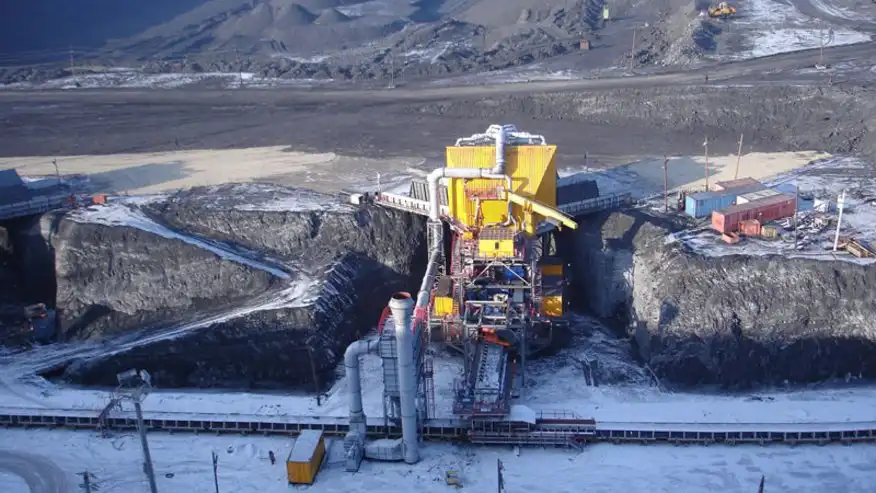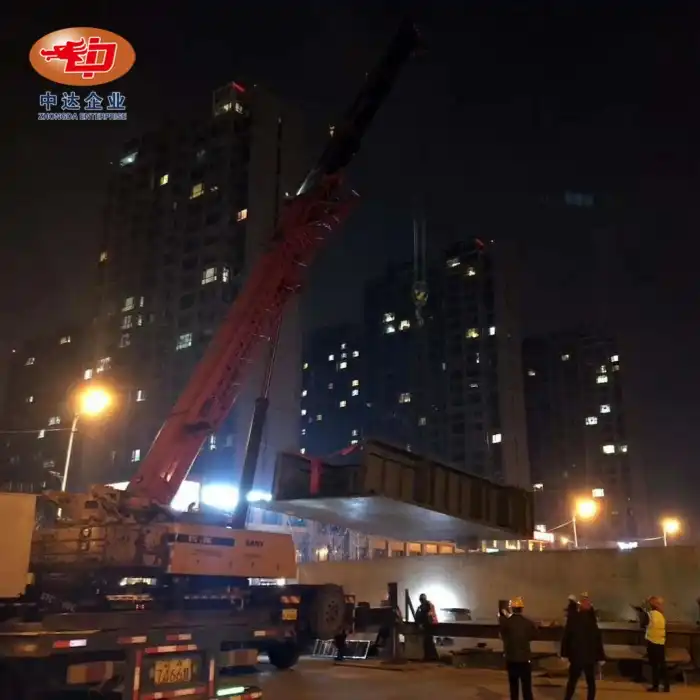Advanced Corrosion Prevention Techniques for Mobile Crushing Stations
Innovative Material Selection for Enhanced Durability
When it comes to combating corrosion in mobile crushing stations, the choice of materials plays a pivotal role. High-performance alloys, such as duplex stainless steel, offer exceptional resistance to corrosive elements commonly found in humid environments. These alloys form a protective oxide layer that self-heals when damaged, providing long-lasting protection against rust and degradation.
Another cutting-edge option is the use of fiber-reinforced polymers (FRP) for non-structural components. FRP materials are inherently corrosion-resistant and lightweight, making them ideal for panels, covers, and other auxiliary parts of the mobile crushing station. This not only enhances durability but also contributes to the overall efficiency of the equipment by reducing weight.
Advanced Coating Technologies for Superior Protection
Beyond traditional epoxy coatings, nanotechnology-based solutions are revolutionizing corrosion prevention. Nanocoatings create an ultra-thin, highly adherent layer that provides superior protection against moisture, chemicals, and abrasion. These coatings can be applied to various surfaces, including metal, plastic, and rubber components, offering comprehensive protection throughout the mobile crushing station.

Thermal spray coatings represent another leap forward in corrosion prevention. This process involves spraying molten or semi-molten materials onto surfaces, creating a durable, bonded coating. For mobile crushing stations, ceramic-metallic (cermet) coatings can be particularly effective, offering both corrosion resistance and wear protection for high-stress components like crusher jaws and screens.
Cathodic Protection Systems for Comprehensive Corrosion Control
Implementing cathodic protection systems can provide an additional layer of defense against corrosion, especially for mobile crushing stations operating in highly corrosive environments. Impressed current cathodic protection (ICCP) systems use an external power source to apply a small electrical current to the metal structure, effectively preventing the electrochemical reactions that cause corrosion.
For smaller components or areas with limited access, sacrificial anodes can be employed. These anodes, made of more reactive metals like zinc or magnesium, corrode preferentially, protecting the surrounding steel structures. By strategically placing these anodes throughout the mobile crushing station, operators can significantly extend the lifespan of critical components exposed to humid conditions.
Optimizing Design and Construction for Rainy Season Resilience
Modular Engineering for Rapid Assembly and Relocation
The modular approach to mobile crushing station design is a game-changer when it comes to mitigating rainy season delays. By breaking down the equipment into pre-fabricated, easily transportable modules, on-site assembly time can be drastically reduced. This not only minimizes exposure to wet conditions during setup but also allows for quick relocation to drier areas when necessary.
Advanced 3D modeling and Building Information Modeling (BIM) technologies play a crucial role in optimizing modular designs. These tools enable engineers to create precise, interlocking components that can be rapidly assembled with minimal tools and expertise. The result is a mobile crushing station that can be operational within hours rather than days, significantly reducing vulnerability to sudden weather changes.
Innovative Drainage and Water Management Solutions
Effective water management is essential for preventing delays and damage during rainy seasons. State-of-the-art mobile crushing stations now incorporate sophisticated drainage systems that quickly channel water away from critical components. These systems may include sloped surfaces, strategically placed gutters, and high-capacity pumps to ensure that water does not accumulate even during heavy downpours.
Moreover, the integration of smart sensors and IoT technology allows for real-time monitoring of moisture levels and water accumulation. This data can trigger automated responses, such as activating pumps or adjusting equipment positioning, to prevent water-related issues before they escalate into significant problems that could cause delays or damage.
Weather-Adaptive Operational Strategies
Developing flexible operational strategies is key to maintaining productivity during rainy seasons. This involves creating detailed contingency plans that account for various weather scenarios. For instance, implementing a system of covered conveyor belts and enclosed processing areas can allow operations to continue even during light to moderate rainfall.
Additionally, leveraging advanced weather forecasting technologies and integrating them into operational planning can help managers make informed decisions about scheduling and equipment deployment. By anticipating periods of heavy rainfall, operations can be adjusted to focus on tasks that are less weather-sensitive, ensuring that overall productivity is maintained despite challenging conditions.
Maintenance and Monitoring Protocols for Humid Environment Operations
Predictive Maintenance Strategies Using AI and IoT
The integration of Artificial Intelligence (AI) and Internet of Things (IoT) technologies is revolutionizing maintenance practices for mobile crushing stations in humid environments. By equipping key components with smart sensors, operators can continuously monitor factors such as temperature, vibration, and moisture levels. This real-time data is then analyzed by AI algorithms to predict potential failures before they occur.
For instance, machine learning models can detect subtle changes in equipment performance that may indicate the onset of corrosion or water-related issues. This allows maintenance teams to intervene proactively, scheduling targeted maintenance during planned downtime rather than reacting to unexpected breakdowns. The result is significantly reduced operational disruptions and extended equipment lifespan, even in challenging humid conditions.
Advanced Cleaning and Preservation Techniques
Regular cleaning is crucial in humid environments, but traditional methods may not suffice. Cutting-edge crawler-type mobile crushing stations now incorporate self-cleaning mechanisms, such as vibrating screens with non-stick coatings that prevent material buildup. For more thorough cleaning, dry ice blasting offers a non-abrasive, environmentally friendly alternative to traditional pressure washing. This technique uses CO2 pellets to remove contaminants without introducing additional moisture, which is particularly beneficial in humid climates.
Post-cleaning, the application of advanced preservation compounds can provide an additional layer of protection. These compounds, often based on nanotechnology, create a molecular barrier against moisture and contaminants. When applied to cleaned surfaces, they can significantly extend the intervals between maintenance cycles, reducing overall downtime and operational costs.
Environmental Monitoring and Adaptive Control Systems
To truly optimize operations in humid environments, it's essential to understand and adapt to local conditions in real-time. State-of-the-art mobile crushing stations now feature comprehensive environmental monitoring systems that track not just humidity levels, but also factors like air quality, temperature fluctuations, and even wind patterns.
This data feeds into adaptive control systems that automatically adjust operational parameters to suit current conditions. For example, if humidity levels spike, the system might increase the frequency of automatic lubrication cycles or adjust material feed rates to prevent clogging. By continuously fine-tuning operations based on environmental data, these systems ensure optimal performance and reliability, regardless of the challenging humid conditions.
Conclusion
Preventing corrosion and rainy season delays in mobile crushing stations operating in humid environments demands a holistic approach. By integrating advanced materials, innovative designs, and cutting-edge technologies, operators can significantly enhance equipment durability and operational efficiency. From nanotechnology coatings to AI-driven predictive maintenance, these strategies not only protect against the harsh effects of humidity but also optimize performance in challenging conditions. As the industry continues to evolve, adopting these advanced solutions will be key to maintaining productivity and extending equipment lifespan in humid climates.
Contact Us
For unparalleled expertise in precision steel solutions tailored for challenging environments, look no further than Zhongda Steel. Our state-of-the-art facility, equipped with BIM-driven prefabrication and -60°C Weathering Steel Anti-corrosion Technology, ensures that your mobile crushing stations are built to withstand the toughest humid conditions. Experience the difference that engineering excellence can make in your operations. Contact us today at Ava@zd-steels.com to learn how we can enhance your equipment's resilience and performance.












_1746262121950.webp)

